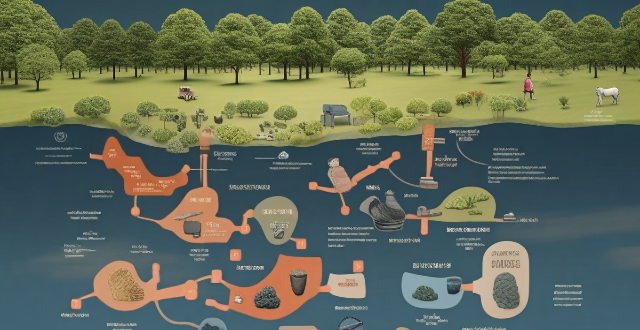Measuring the extent of climate loss and damage requires a comprehensive approach that considers various factors, including direct and indirect impacts on natural and human systems. To measure these impacts, we need to identify affected areas, quantify economic losses, assess social and health impacts, evaluate environmental impacts, and consider long-term implications. By doing so, we can better understand the scope of climate loss and damage and develop effective strategies for adaptation and mitigation.

Measuring the Extent of Climate Loss and Damage
Climate loss and damage refer to the negative impacts of climate change on natural and human systems. These impacts can be direct, such as extreme weather events, or indirect, such as changes in ecosystems and biodiversity. To measure the extent of climate loss and damage, we need to consider several factors:
1. Identify the affected areas
- Direct Impacts: Extreme weather events like hurricanes, floods, and droughts can cause physical damage to infrastructure, homes, and businesses. This can be measured by assessing the cost of repairs and replacements.
- Indirect Impacts: Changes in temperature, precipitation, and other climate variables can affect ecosystems, biodiversity, and agricultural productivity. This can be measured by monitoring changes in species distribution, crop yields, and water availability.
2. Quantify the economic losses
- Direct Economic Losses: The cost of repairing or replacing damaged infrastructure and property can be estimated using insurance claims data, government reports, and expert analyses.
- Indirect Economic Losses: The impact of climate change on agriculture, tourism, and other sectors can be quantified by analyzing trends in production, revenue, and employment.
3. Assess the social and health impacts
- Displacement and Migration: Climate-related disasters can force people to leave their homes and communities, leading to social disruption and increased vulnerability. This can be measured by tracking displacement rates and migration patterns.
- Health Impacts: Extreme weather events and changing disease vectors can have significant health consequences. This can be measured by monitoring changes in public health indicators, such as mortality rates and disease prevalence.
4. Evaluate the environmental impacts
- Ecosystem Changes: Climate change can alter ecosystems, affecting biodiversity and ecological processes. This can be measured by monitoring changes in species distribution, habitat quality, and ecosystem services.
- Carbon Emissions: Climate-related disasters can lead to increased carbon emissions from deforestation, wildfires, and energy demand. This can be measured by tracking changes in carbon stocks and emissions levels.
5. Consider the long-term implications
- Adaptation Costs: The costs of adapting to climate change, such as building seawalls or developing drought-resistant crops, should be included in the overall assessment of climate loss and damage.
- Future Risks: The potential for future climate-related disasters and their associated costs should also be considered when measuring the extent of climate loss and damage.
In conclusion, measuring the extent of climate loss and damage requires a comprehensive approach that considers both direct and indirect impacts across various sectors. By identifying affected areas, quantifying economic losses, assessing social and health impacts, evaluating environmental impacts, and considering long-term implications, we can better understand the scope of climate loss and damage and develop effective strategies for adaptation and mitigation.